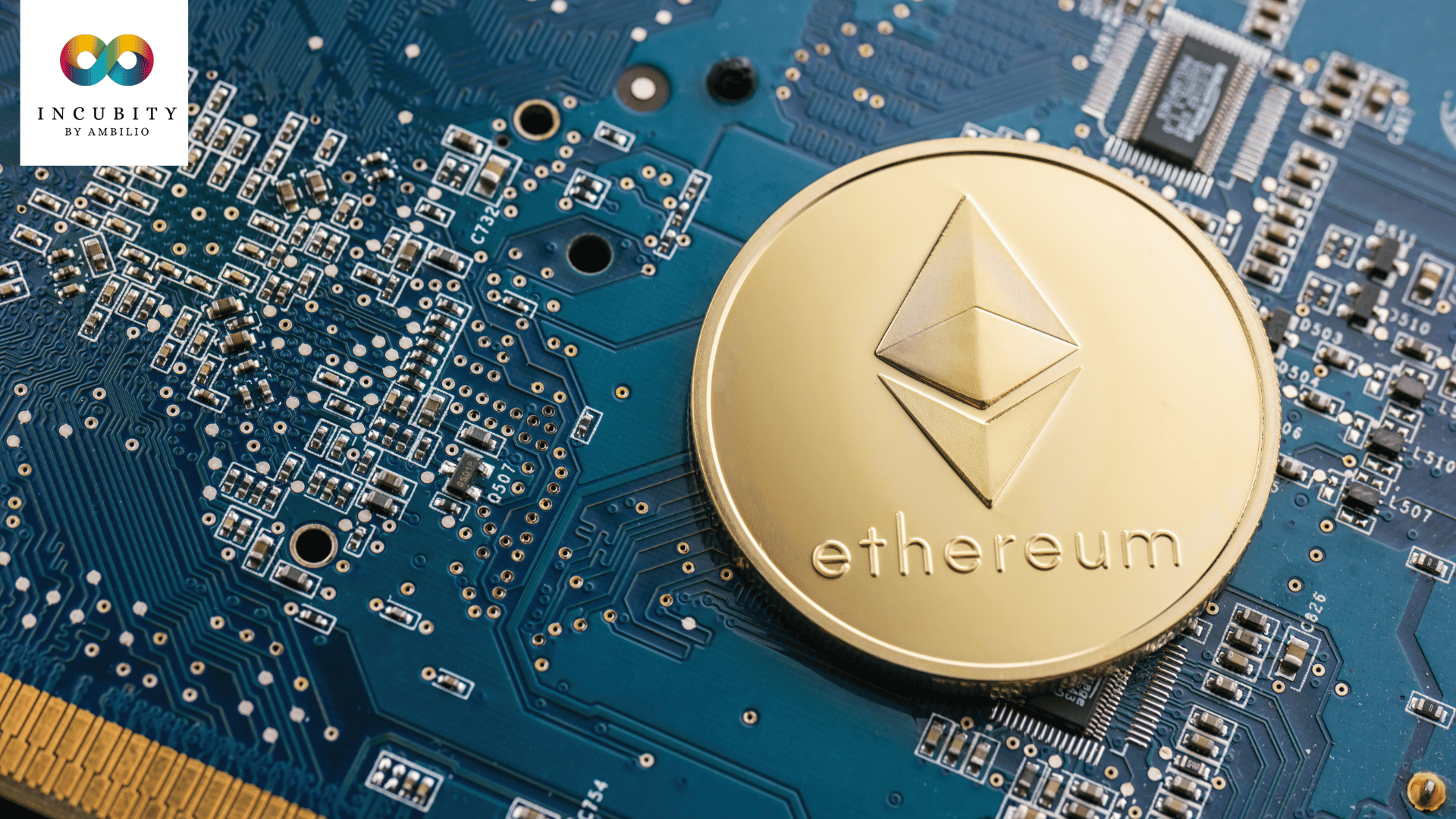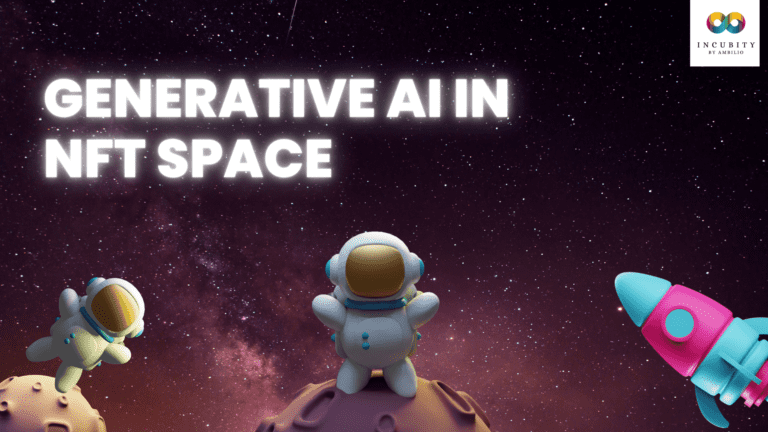Ethereum has emerged as one of the most innovative and promising blockchain platforms, enabling developers to build decentralized applications and smart contracts that have the potential to transform various industries.
In this article, we will provide a comprehensive overview of Ethereum. We will cover key topics such as blockchain fundamentals, smart contracts, transaction fees, and the Ethereum ecosystem. We will also explore popular use cases for Ethereum, including decentralized finance, and non-fungible tokens. Finally, we will discuss the challenges and risks associated with Ethereum, as well as the future outlook for this innovative technology.
What is Ethereum?
Ethereum is an open-source, decentralized blockchain platform that was created to enable developers to build decentralized applications (dApps) and smart contracts without relying on centralized intermediaries or servers.
Ethereum has come a long way since its inception in 2013. The platform launched its mainnet in July 2015, and since then, it has grown to become the second-largest cryptocurrency by market capitalization. One of Ethereum’s key features is its ability to run smart contracts. Another key feature is its native cryptocurrency, Ether (ETH), which is used to pay transaction fees and as a medium of exchange on the platform.
Understanding Ethereum Technology
Ethereum, like Bitcoin, is based on blockchain technology. A blockchain is a distributed ledger that maintains a continuously growing list of records, called blocks, which are linked and secured using cryptography. Each block contains a hash of the previous block, a timestamp, and transaction data. This makes the blockchain immutable, transparent, and tamper-proof.
To ensure the integrity and security of the blockchain, Ethereum uses a consensus mechanism called Proof of Stake (PoS). This mechanism relies on validators, who stake a certain amount of Ether to become validators and secure the network by producing new blocks. Validators are incentivized to act honestly, as they can earn rewards for doing so, and can be penalized for acting maliciously.
Smart contracts are self-executing contracts with the terms of the agreement between buyer and seller being directly written into lines of code. Smart contracts allow for the automation of complex financial transactions, the creation of decentralized autonomous organizations (DAOs), and more. The most popular language used for writing smart contracts on Ethereum is Solidity.
Ethereum transaction fees, known as gas, are used to pay for the computational resources required to execute smart contracts on the Ethereum network. Gas is paid in Ether, the native cryptocurrency of Ethereum. The gas price is determined by the market and is used to prioritize transactions on the network.
While both Ethereum and Bitcoin are based on blockchain technology, they have some significant differences. Bitcoin was designed primarily as a peer-to-peer electronic cash system, while Ethereum was designed as a platform for building decentralized applications and smart contracts. Additionally, Ethereum uses a different consensus mechanism, Proof of Stake, while Bitcoin uses Proof of Work.
Ethereum Ecosystem
Ethereum has a rich ecosystem that includes a variety of elements such as Ether (ETH), several other tokens, wallets, and clients.
Ether (ETH) and Other Tokens
Ether (ETH) is the native cryptocurrency of the Ethereum network and is used as a means of exchange for services and as a transaction fee for processing transactions on the network. In addition to Ether, other tokens can be created on the Ethereum network using smart contracts. These tokens can represent anything from assets to digital identities.
Ethereum Wallets
Ethereum wallets are used to store and manage Ether and other Ethereum-based tokens. They come in various forms, including hardware wallets, software wallets, and web wallets.
Ethereum Clients
Ethereum clients are software implementations of the Ethereum protocol. They allow users to interact with the Ethereum network and execute transactions on the blockchain. Some popular Ethereum clients include Geth, Parity, and Besu.
Ethereum Development
Ethereum’s unique features, such as smart contracts, make it a powerful platform for developing decentralized applications. In this section, we’ll explore the key tools and techniques used in Ethereum development.
Solidity is the most popular programming language used for developing smart contracts on Ethereum. It is a contract-oriented language that is similar to JavaScript in terms of syntax. Other languages used for Ethereum development include Vyper, Serpent, and LLL.
Several development tools are available for Ethereum developers. Remix is a popular web-based IDE that allows developers to write, test, and deploy smart contracts. Truffle is a development framework that provides a suite of tools for developing, testing, and deploying smart contracts. Ganache is a personal Ethereum blockchain that can be used for testing smart contracts.
Deploying a smart contract on Ethereum involves sending a transaction to the network that contains the contract’s code. Testing is an essential part of the development process to ensure that smart contracts function as intended. Tools like Truffle and Ganache make it easy to test smart contracts.
Web3.js is a JavaScript library that allows developers to interact with the Ethereum network using the JSON-RPC protocol. It provides a simple and intuitive API for sending transactions, querying the blockchain, and interacting with smart contracts.
By understanding these key tools and techniques, developers can build decentralized applications on Ethereum that have the potential to transform various industries.
Use Cases for Ethereum
Ethereum’s versatility has made it a popular platform for various use cases beyond just cryptocurrency. Some of the notable use cases for Ethereum include:
Decentralized Finance (DeFi)
DeFi is one of the most popular use cases for Ethereum. It includes a range of financial applications built on the Ethereum blockchain, such as decentralized exchanges (DEXs), lending platforms, stablecoins, and more.
Non-Fungible Tokens (NFTs)
NFTs are unique digital assets that can represent anything from art to music to virtual real estate. Ethereum’s ability to support smart contracts has made it the most popular platform for NFTs.
Gaming and Virtual Worlds
Ethereum has been used to create blockchain-based gaming and virtual worlds where players can own and trade in-game assets.
Supply Chain Management
Ethereum can be used to create a transparent and secure supply chain management system that tracks products from origin to consumer, ensuring authenticity and preventing fraud.
These are just a few examples of how Ethereum is being used in the real world today. The flexibility and programmability of Ethereum mean that its potential use cases are virtually limitless, and we can expect to see even more innovative applications in the future.
Ethereum Community and Governance
Ethereum is more than just a technology, it’s also a community of developers, users, and enthusiasts who are working together to build a decentralized future. At the center of this community is the Ethereum Foundation, a non-profit organization that was created to support the development and adoption of the Ethereum platform.
The Ethereum Foundation is responsible for funding key development projects, organizing community events, and driving the overall direction of the platform. In addition to the foundation, many other organizations and individuals contribute to the Ethereum ecosystem, including developers who create new applications, validators who secure the network, and users who participate in decentralized finance and other activities.
One of the key ways that the Ethereum community drives innovation is through Ethereum Improvement Proposals (EIPs). EIPs are proposals for changes or additions to the Ethereum protocol, and they can be submitted by anyone in the community. EIPs are reviewed and discussed by the community, and if they are approved, they can be implemented in future versions of the Ethereum software.
The Ethereum community also holds regular events and meetups, both online and in person. Some of the most popular events include Devcon, an annual conference that brings together developers and other stakeholders in the Ethereum ecosystem, and ETHGlobal hackathons, which are focused on building decentralized applications on the Ethereum platform.
The Ethereum community is a vibrant and diverse group of individuals who are working together to build a decentralized future. Through collaboration, innovation, and a shared commitment to the principles of decentralization and openness, the Ethereum community is helping to transform the way we think about technology, finance, and society as a whole.
Risks and Challenges
Ethereum has gained significant attention and adoption in recent years, but it still faces several risks and challenges. Some of the most prominent risks and challenges include:
- Security risks: As with any blockchain technology, Ethereum is not immune to security risks. Smart contract vulnerabilities, hacks, and other forms of cyber attacks are among the top security risks facing Ethereum. However, the Ethereum community and developers are constantly working to improve security measures and mitigate risks.
- Scalability challenges: One of the most significant challenges facing Ethereum is scalability. The current blockchain architecture is not capable of handling large volumes of transactions, which can lead to network congestion and high transaction fees. Several solutions, such as sharding and layer-2 solutions, are being developed to address scalability challenges.
- Regulatory challenges: The regulatory environment around blockchain and cryptocurrencies is still evolving and can be challenging to navigate. Ethereum’s decentralized nature presents unique regulatory challenges, as it is not controlled by any central authority. Additionally, the legality of smart contracts and other decentralized applications is still uncertain in many jurisdictions.
- Competing blockchain technologies: Ethereum is not the only blockchain platform aiming to enable decentralized applications and smart contracts. Competing blockchain technologies, such as Polkadot, Cardano, and Binance Smart Chain, are gaining momentum and pose a threat to Ethereum’s dominance. However, Ethereum’s strong developer community and ecosystem provide a significant competitive advantage.
Final Words
In this article, we provided a comprehensive overview of Ethereum, one of the most innovative blockchain platforms in existence. We covered key topics such as blockchain fundamentals, smart contracts, transaction fees, and the Ethereum ecosystem. We also explored popular use cases for Ethereum, including decentralized finance, non-fungible tokens, gaming, and supply chain management.
Furthermore, we discussed the challenges and risks associated with Ethereum, such as security and scalability risks, regulatory challenges, and competition from other blockchain technologies. Despite these challenges, the future outlook for Ethereum remains bright, as the platform continues to evolve and improve.
As the Ethereum community grows and more developers build on the platform, we can expect to see a wide range of innovative decentralized applications and use cases emerge. With its vision of a decentralized and transparent world, Ethereum is poised to play a major role in shaping the future of finance, governance, and many other industries.
In the next article, we will take a hands-on approach and guide you through creating a simple decentralized application (dApp) on Ethereum. We will start by creating a smart contract using Solidity, Ethereum’s native programming language, and then deploy it on a testnet to ensure that it functions properly. After that, we will build a user interface that interacts with the smart contract, allowing users to perform various functions on the dApp. Stay tuned!








